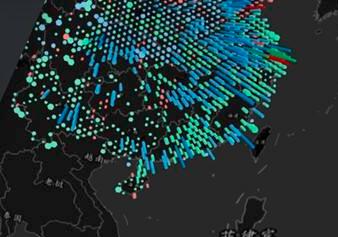MENG Jihua, LIN Zhenxin, GAO Xinyu, HE Rongpeng, ZUO Liju
[Significance] As a critical pathway to achieving Sustainable Development Goal (SDG) 2, “Zero Hunger,” and ensuring long-term ecological sustainability, the concept and practice of sustainable agriculture are undergoing a paradigm shift toward data-driven and system-oriented approaches. In recent years, Big Earth Data—comprising remote sensing, geospatial, meteorological, and agricultural Internet of Things (IoT) data—has emerged as a foundational driver for agricultural monitoring, decision support, and technological innovation in sustainable development. [Analysis] Given the interdisciplinary, multi-stakeholder, cross-regional, and evolving-goal nature of sustainable agriculture, this study begins by systematically reviewing the conceptual evolution of the term. It highlights the multidimensional implications and diverse practical pathways of sustainable agriculture, noting its growing role as a core component of global development strategies. On this basis, the paper proposes a new, data-oriented and operational interpretation of sustainable agriculture. The study then establishes an analytical framework—“data-Technology”—to clarify the pivotal role of Big Earth Data in supporting sustainable agriculture. It examines the evolution of core datasets and key technical methods across three periods: before 2015, 2015—2019, and 2020 to the present. The applications reviewed include agricultural resource monitoring, multi-scale crop condition assessment, and evaluations of agriculture's environmental impacts. The findings suggest that sustainable agriculture, enabled by Big Earth Data, is rapidly shifting from a paradigm of "observational analysis" to one of "intelligent decision-making." Furthermore, the study conducts a comparative assessment of China, the United States, and the European Union across four critical dimensions: data infrastructure; technological advancement and application; scientific research capacity; and policy support. While China has made significant progress in all four areas—with strengths in remote sensing capabilities, rapid technological rollout and demonstration, substantial research output, and clearly defined policy directives—it continues to face challenges in data ecosystem development, original algorithm innovation, commercialization of scientific outputs, and the alignment of standards and incentive mechanisms. Finally, in light of the current needs for sustainable agricultural development, this study systematically analyzes the major challenges facing Big Earth Data from four aspects: data acquisition capacity, intelligent processing methods, application promotion and services, and data governance and ethical security. In response, it proposes multi-level strategies covering standardization, model optimization, improvements to service systems, and protection of data rights, with the aim of providing a reference pathway for the efficient utilization and sustainable development of agricultural big data in the future. [Prospect] The article aims to analyze the data-driven transformation pathway of sustainable agriculture and provide a systematic reference for its green, inclusive, and intelligent development.
